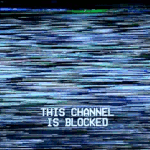|
cage-free egghead posted:I'm slowly moving over to Linux from years of Windows and it's going good mostly. My desktop dual boots Pop OS! and Win10 which will probably stay that way until gaming with Xbox Game Pass is possible on Linux. I put them in folders in /opt with a symlink to a generic name (e.g, 'firefox' pointing to 'firefox-84.0.0.0.appimage') and then add a .desktop file to /usr/share/applications
|
|
|
|

|
| # ? May 29, 2024 22:17 |
|
cage-free egghead posted:I'm slowly moving over to Linux from years of Windows and it's going good mostly. My desktop dual boots Pop OS! and Win10 which will probably stay that way until gaming with Xbox Game Pass is possible on Linux. KDE Plasma ships with a menu editor, creatively named "KDE Menu Editor". It's just a handy front end for editing .desktop files. Should work for most desktops since .desktop files are somewhat standardised.
|
|
|
|
Anyone want to recommend a Linux podcast or even episode? Going on a two hour drive and want something to listen to.
|
|
|
|
Ok, I have a weird emoji display issue and I don't even know where to start debugging this. I'm running SUSE Tumbleweed with KDE as my desktop. I have a few emoji fonts installed: emojione-color-font, noto-coloremoji-fonts, and twemoji-color-font. - in KDE/Qt widgets like the open/save file dialogs, the alt-F2 run program text box, etc, I get two different styles of black and white line drawing emoji, depending on the specific UI element in play. - In XTerm I get the same. - in Chrome, I get the same black and white emoji in the address bar, and colour emoji in page content. - in Konsole, Kate, and KDE Emoji Selector, I get the same style of colour emoji as in Chrome. - in Firefox, I get a different style of colour emoji (for example, the "open folder" emoji is blue instead of yellow), but only in the address bar -- in page content they don't display at all, and have no display width. - in Sublime Text and gnome-terminal, they don't display at all, but still have width and can be selected; they just show up as blank space. I would have thought it's a GTK issue, since it doesn't work in ST3 or gnome-terminal, but it does work in Chrome and that also uses GTK.
|
|
|
|
Different fonts might be involved, on some level.
|
|
|
|
cage-free egghead posted:On my Chromebook however I am using GalliumOS which is based on Xubuntu. There's a few programs that I have installed as AppImages but they're just sitting in my downloads folder and I'm not sure on the best way to add them to my "start" menu or just an easy place to get to my most used apps. Any ideas? What's your general workflow like? As far as integrating AppImages into your launcher menu/dock/screen/whatever: https://github.com/TheAssassin/AppImageLauncher
|
|
|
|
CaptainSarcastic posted:Have you checked the power settings? In KDE it seems like most of what you are trying to accomplish would be in "power management." I haven't used Gnome in years so am not up to speed on it. Yeah the power settings are pretty sparse in Gnome. Just the ones I already mentioned pretty much. However, your post inspired me to give KDE a shot so I installed it and it seems to work much better. It keeps the screen on when ANY media is playing, including music, so all I need to do is shut the TV off when I'm playing music and everything's good. It does seem to have issues with display scaling not applying to everything but I can live with that and it'll be fun to try out a new desktop environment.
|
|
|
|
Bob Morales posted:Anyone want to recommend a Linux podcast or even episode? Going on a two hour drive and want something to listen to. I sat through an episode and 1/3rd of 'Linux Unplugged' and shut it the gently caress off. Ugh. https://linuxunplugged.com/384
|
|
|
|
Bob Morales posted:Anyone want to recommend a Linux podcast or even episode? Going on a two hour drive and want something to listen to. Not Linux specifically but Darknet diaries probably has something.
|
|
|
Bob Morales posted:Anyone want to recommend a Linux podcast or even episode? Going on a two hour drive and want something to listen to.
|
|
|
|
|
I've tried listening to Bryan Lunduke's podcast because of how much I've enjoyed his annual "Linux Sucks" videos, but I wind up only listening to the select excerpts he posts instead of the full-length shows.
|
|
|
|
I'm pretty sure this has been discussed, but what is the difference between apt and apt-get? I read the man pages today, it looks like apt is a passthrough for apt-get and also apt-cache. I like this because it's less keystrokes, and you only need to remember one command instead of two for finding and installing packages. But I noticed you can "apt-get check" but you cannot "apt check", is it correct that some of apt-get's more esoteric, possibly destructive commands are hidden or not available in apt? If so, what other commands are not available in apt but are available in apt-get or apt-cache? Is there any other big difference in not noticing? Not Wolverine fucked around with this message at 19:16 on Dec 22, 2020 |
|
|
|
Not Wolverine posted:I'm pretty sure this has been discussed, but what is the difference between apt and apt-get? I read the man pages today, it looks like apt is a passthrough for apt-get and also apt-cache. Unlike this because it's less keystrokes, and you only need to remember one command instead of two for finding and installing packages. You pretty much covered it. quote:6.2. aptitude, apt-get, and apt Commands https://debian-handbook.info/browse/stable/sect.apt-get.html
|
|
|
|
Bob Morales posted:Anyone want to recommend a Linux podcast or even episode? Going on a two hour drive and want something to listen to. Most of podcasts are OK in very small doses. Try: - Late Night Linux - Destination Linux - Linux Unplugged - BSD Now (if you like BSD) I wouldn't listen to them for a full two hours.
|
|
|
|
astral posted:Different fonts might be involved, on some level. The solution turned out to be to uninstall noto-coloremoji-fonts and then restart all the afflicted programs. I have no idea why.
|
|
|
|
ToxicFrog posted:Ok, I have a weird emoji display issue and I don't even know where to start debugging this. Oh dear. ToxicFrog posted:The solution turned out to be to uninstall noto-coloremoji-fonts and then restart all the afflicted programs. I have no idea why. The magic word is "fontconfig". Applications can ship their own rules in addition to user-defined rules and system-defined rules. For a given character and preferred font, fontconfig will look through a ladder of preferred fonts and pick the first it finds. Crucially, it can also substitute if an applications asks for a font (family) that does not exist on the system, and it can even substitute single characters if an application asks for a glyph that does not exist in a font. For example, if you fc-match Arial it will probably give you the closest equivalent (that's Liberation Sans on my box). (fc-match -s Arial gives you the entire order of preference for "Arial-ness") I'm not sure what SuSe configures there and I generally know enough about fontconfig and fonts to not want to touch it. This poo poo is hilariously complicated because fonts sit in the middle of intersecting domains of language, computer crap, writing systems, culture…
|
|
|
|
Bob Morales posted:Anyone want to recommend a Linux podcast or even episode? Going on a two hour drive and want something to listen to. Listen to Three Moves Ahead instead. It's a great podcast and I will never stop shilling for it.
|
|
|
|
Antigravitas posted:Oh dear. ToxicFrog posted:The solution turned out to be to uninstall noto-coloremoji-fonts and then restart all the afflicted programs. I have no idea why. That said, Ubuntu installs noto-coloremoji-fonts by default, this is Google's No Tofu font set. No Tofu refers older incomplete font packages displaying a unicode tofu character whenever a character was missing in Asian languages, simply put this should be a pretty complete font set because it's Google trying actively trying to prevent missing characters. Next you have Emojione-color-font - according to Github, this font pack is end of life and they recommend switching to your last font set, Twitter Color Emoji. Twemoji-color-font pack is the previously mentioned Twitter Color Emoji font pack, I'll let you decide how you feel about Twitter vs Google. I will say that on Kubuntu 20.04, I could not find a Twitter Emoji font pack when I searched with Muon package monitor, that leads me to believe Ubuntu likes Google's Noto fonts and dislikes Twitter's Emoji pack. For what it's worth, "Twitter Color Emoji" might not be associated with the Twitter company (it probably is), I haven't verified that since I don't care enough to do so since I like Google and I have Noto Emoji, and life is good on my machine. TLDR: noto-coloremoji-fonts is from Google and therefore I think it might be a more complete set than twemoji-color-font or emojione-color-font. If you want all of your emoji to be the same, remove all but one font pack.
|
|
|
Not Wolverine posted:This all looks like good accurate information. However, will font config effect what fonts programs use? I looked into this recently on Kubuntu recently, and I believe you can "disable" fonts without removing them, meaning that they won't show up as a user selectable option in your applications. This way you can keep 100 different flavors of Arial just in case, but in Libre Office, you will only see your favorite Arial(s) instead of scrolling through a mile long drop down box. I don't think this would change what font applications use, if an app is configured to use a "disabled" font that is installed on your system, it can still use that font. Or is my understanding of "fontconfig" completely wrong? This meant that some package systems (like FreeBSD Ports and Ravenports) started having twemoji as a dependency of libreoffice, while other people recommended having both installed for libreoffice, without realizing that they serve the same function - and that recommendation has stayed alive even after emojione was EoL'd. All because 3rd party repos weren't updated or kept in line with upstream. BlankSystemDaemon fucked around with this message at 14:50 on Dec 23, 2020 |
|
|
|
|
Is there an app that is like Handbrake + the ability to trim videos? I have a capture device that I'm using, but the issue is I hit record, start what I want to record, finish, and then hit stop thus capturing everything I want and a little I don't want at the start and end of my capture. I tried KDEnlive, and I eventually figured out how to trim, but then I hit render. My 8GB source file got to about 20% before I realize the output was 23GB in size and I hit abort. I think the right answer is to configure KDEnlive to use a lower quality h264 setting, preferably the same as Handbrake's Fast 1080P profile since I like the resulting file size. My concern is simpy that KDEnlive just seems like too powerful a tool for this, I like the simplicity of being able to just load a file into Handbrake and hit go, but I wish Handbrake had the ability to also trim the files. I think I could also cut the videos without re-encoding if i cut on iframes, and 99% of the time, I make my cuts on a black screen without any audio playing, like a loading screen on my game. Ideally, I would like to use just one program, but I'm fine with also using Handbrake + a really dumbed down cut-only style video editor to cut the files before encoding with Handbrake. I think I can also make the cut using ffmpeg and the command line, but the problem there is finding out the exact time to make the cut, I want a preview window to select the last black frame before the footage starts. BlankSystemDaemon posted:Well, I believe there's a reason for this: emojione was often recommended to be installed by unix-like package managers with libreoffice because it was bundled into the ofifical binaries, and at some point some of the people who made emojione went on to recommend that people should install twemoji, because emojione was being end of lifed. Not Wolverine fucked around with this message at 14:48 on Dec 23, 2020 |
|
|
|
Ignore this, sorry. Too early in the morning without coffee and I completely ignored where you said you could do this with ffmpeg. Edit: I think it would probably still be easier to load the video in mplayer/mpv/vlc to find your timeframes and then you can cut with ffmpeg: ffmpeg -i (input file) -ss (start time) -t (end time) -c copy (output file) ex: ffmpeg -i video.mp4 -ss 00:01:15 -t 00:06:05 -c copy newvideo.mp4 As long as you don't apply filters with ffmpeg, it should demux the video instead of re-encoding it. If all you want to do is cut the video then this is by far the most simple and straight forward option. tjones fucked around with this message at 15:26 on Dec 23, 2020 |
|
|
|
Not Wolverine posted:This all looks like good accurate information. However, will font config effect what fonts programs use? I looked into this recently on Kubuntu recently, and I believe you can "disable" fonts without removing them, meaning that they won't show up as a user selectable option in your applications. This way you can keep 100 different flavors of Arial just in case, but in Libre Office, you will only see your favorite Arial(s) instead of scrolling through a mile long drop down box. I don't think this would change what font applications use, if an app is configured to use a "disabled" font that is installed on your system, it can still use that font. Or is my understanding of "fontconfig" completely wrong? The actual font selection part is an application requesting a font or family and fontconfig going through its PATH looking for rules to use. See https://www.freedesktop.org/software/fontconfig/fontconfig-user.html I'm fairly sure applications that let you choose a specific font bypass fontconfig altogether. It wouldn't make much sense if you selected something in Libreoffice but got something else entirely. Disabling a font would likely just involve renaming the font in your user profile's font folder. As for cutting video, isn't handbrake's fast profile just CRF 22 h264? You can tell KDEnlive that you'd like CRF 22 and you'd be there already. Also, try avidemux for simple cutting.
|
|
|
|
Not Wolverine posted:Is there an app that is like Handbrake + the ability to trim videos? I have a capture device that I'm using, but the issue is I hit record, start what I want to record, finish, and then hit stop thus capturing everything I want and a little I don't want at the start and end of my capture. You want, I think, a GUI frontend to ffmpeg. Avidemux should do the trick, and is available in most distro repos except Ubuntu for some weird reason. Alternatively you can get AppImage from the developer or use Flatpak.
|
|
|
|
Edit: Need to lurk more.
xtal fucked around with this message at 16:40 on Dec 23, 2020 |
|
|
|
That reminded me to check up on Cinelerra, supposedly the adobe premiere of linux. I could never get it to actually run but it's probably been 5+ years since I tried. Nice that it's still kicking but I wonder if it runs better now.
|
|
|
|
Not Wolverine posted:Is there an app that is like Handbrake + the ability to trim videos? I have a capture device that I'm using, but the issue is I hit record, start what I want to record, finish, and then hit stop thus capturing everything I want and a little I don't want at the start and end of my capture. I tried KDEnlive, and I eventually figured out how to trim, but then I hit render. My 8GB source file got to about 20% before I realize the output was 23GB in size and I hit abort. I think the right answer is to configure KDEnlive to use a lower quality h264 setting, preferably the same as Handbrake's Fast 1080P profile since I like the resulting file size. My concern is simpy that KDEnlive just seems like too powerful a tool for this, I like the simplicity of being able to just load a file into Handbrake and hit go, but I wish Handbrake had the ability to also trim the files. Try Video Trimmer: https://gitlab.gnome.org/YaLTeR/video-trimmer It's a simple GUI for ffmpeg, available as a Flatpak.
|
|
|
|
Avidemux is my go-to trimmer. If you stick to trimming at keyframes, it won't re-encode. But it'll do re-encoding to various codecs, some basic filters, etc, while remaining a lot simpler than a full Non-Lineart Editor such as KDEnlive. http://avidemux.sourceforge.net/ edit: overlooked Craptacular's response, so this is a seconding of that.
|
|
|
|
Not Wolverine posted:Forgive me if I sound rude, but why do you have multiple emoji fonts installed? I'm guessing by how you say "I have no idea" that these packages just found their way onto your system without your knowledge, either from being installed by default, through upgrades, or possibly even installed whenever you added more software (ie like Firefox might have asked you to install another emoji font pack). I have them installed because when I first set up this system, I had issues with emoji not displaying at all in anything, so I installed every font with "emoji" in the name, on the grounds that I don't particularly care about consistency, but I do care about not having missing glyphs, and I have in the past had issues with different emoji fonts covering different subsets of the emoji space -- so, better to install all the fonts to increase the odds that any given glyph is present in at least one of them. The "I have no idea" is that I don't understand why uninstalling an emoji font would improve overall emoji coverage; someone on another net theorized that the issue is that Noto does something weird that leads to certain font rendering libraries being unable to display it properly, based on the described symptoms and similar issues they've had with it. quote:TLDR: noto-coloremoji-fonts is from Google and therefore I think it might be a more complete set than twemoji-color-font or emojione-color-font. If you want all of your emoji to be the same, remove all but one font pack. The problem I was having was never consistency, it was that emoji flat out did not work in some applications. I do not particularly care about consistency for emoji as long as all the glyphs are actually visible.
|
|
|
|
Not Wolverine posted:Is there an app that is like Handbrake + the ability to trim videos? I have a capture device that I'm using, but the issue is I hit record, start what I want to record, finish, and then hit stop thus capturing everything I want and a little I don't want at the start and end of my capture. I tried KDEnlive, and I eventually figured out how to trim, but then I hit render. My 8GB source file got to about 20% before I realize the output was 23GB in size and I hit abort. I think the right answer is to configure KDEnlive to use a lower quality h264 setting, preferably the same as Handbrake's Fast 1080P profile since I like the resulting file size. My concern is simpy that KDEnlive just seems like too powerful a tool for this, I like the simplicity of being able to just load a file into Handbrake and hit go, but I wish Handbrake had the ability to also trim the files. I'm pretty sure that you could use VLC for at least the trimming part. It's mostly thought of as a media player but it has some editing capability.
|
|
|
|
ToxicFrog posted:I have them installed because when I first set up this system, I had issues with emoji not displaying at all in anything, so I installed every font with "emoji" in the name, on the grounds that I don't particularly care about consistency, but I do care about not having missing glyphs, and I have in the past had issues with different emoji fonts covering different subsets of the emoji space -- so, better to install all the fonts to increase the odds that any given glyph is present in at least one of them. ToxicFrog posted:The problem I was having was never consistency, it was that emoji flat out did not work in some applications. I do not particularly care about consistency for emoji as long as all the glyphs are actually visible. ToxicFrog posted:- in KDE/Qt widgets like the open/save file dialogs, the alt-F2 run program text box, etc, I get two different styles of black and white line drawing emoji, depending on the specific UI element in play. tjones posted:Ignore this, sorry. Too early in the morning without coffee and I completely ignored where you said you could do this with ffmpeg. Avidemux and videotrimmer also look good, but I have no idea what flatpack even means really. For that matter, I'm not even sure what snap packs are except that KDEnlive is available as a flatpack, but I seem to recall a lot of posts here saying snap packs suck.
|
|
|
|
Not Wolverine posted:I have VLC on my systems already, and I might just try to use it for trimming if it's possible. The only issue I have with doing so is that I think VLC's interface is a bit difficult and easy to forget at times, I might have to look it up again next month or the next time I trim a capture. It's great it has so much power, but I'm afraid I could accidentally start streaming or doing a full re-encode on a video by clicking the wrong menu in VLC. I think I like the idea of using ffmpeg and time stamps the best, is there a way to tell ffmpeg to trim at a key frame from the command line? if I have to specify the points by time, don't I also need to enter very precisely like 00:13:42.06969 ? Or could I specify by frame number instead, if I can somehow find the frame number in VLC? For VLC, use the shortcuts for next frame. Get in the ballpark and then set a bookmark, scroll through the video second by second, and then frame by frame. If you screw up or go past where you wanted, use the bookmarks to jump back. https://wiki.videolan.org/QtHotkeys/ As for ffmpeg, with the copy codec option (-c copy), ffmpeg will force the video split at a keyframe. You can give it hyper precise timestamps or a round about second and it will start at the next keyframe, but include audio prior. See below for more information. The following link should answer your questions more concisely than I could. It has other good information about seeking in general. https://trac.ffmpeg.org/wiki/Seeking https://trac.ffmpeg.org/wiki/Seeking posted:Time unit syntax Good luck. It may be easier to use a frontend if you're not comfortable with the command line. They'll drive ffmpeg, so you would most likely get the same results. I've not used any of the GUI frontends, so I can't recommend one over another. Flatpaks/snaps are all-in-one application packages that include everything you need to run the executable in the package and run in a sandbox. Snaps are Canonical's (read: Ubuntu) verison of a flatpak and require systemd.
|
|
|
|
Not Wolverine posted:I'm glad you've got your issue sorted out now, I was just a little confused about exactly what the problem was. That's fair, I could have been clearer about the fact that the problem I was trying to solve was specifically emoji not displaying in FF/ST3/etc and that the various inconsistencies were additional information provided for diagnostic purposes, not part of the problem.
|
|
|
|
Seeing colour emoji in my terminal was a spooky and slightly surreal experience, ngl.
|
|
|
|
Not Wolverine posted:Avidemux and videotrimmer also look good, but I have no idea what flatpack even means really. For that matter, I'm not even sure what snap packs are except that KDEnlive is available as a flatpack, but I seem to recall a lot of posts here saying snap packs suck. So I would suggest getting the AppImage from the developer here: http://www.fosshub.com/Avidemux.html/avidemux_2.7.6.appImage It's a self-contained binary, so just flag it executable and launch it.
|
|
|
Craptacular! posted:It's a self-contained binary, so just flag it executable and launch it. A statically compiled binary is just as self-contained as a fat binary is - however one is a single contiguous binary image, while the other contains multiple binary images of architecture-specific code and configuration (such as when you open a .app from macOS). Plus, every kernel used in modern OS' support arbitrary binary image activation (for example via binmiscctl in FreeBSD), which can be used for anything from interpreted languages, qemu usermode emulation (ie. running aarch64/mips64/ppc64 binaries on an x86(_64)/AMD64 commandline), to syscall translation via Wine (so that you can run Windows binaries from a Unix-like commandline, similar to how FreeBSDs Linux syscall translation in the kernel works, but using Wine in userspace instead).
|
|
|
|
|
It’s “self contained” to the layman because there is no install script or dependencies. This is one big why Linux has trouble gaining traction, the assumption that ever user is or wants to be a programmer.
|
|
|
|
Yeah, most people actively do not want to know the different things that a linux person might call 'self contained' and can't get help from non-nerds who won't stop forcing that info down their throats.
|
|
|
|
I know a bit about computer programming, I can speak C++ but I wouldn't call myself a programmer. That said, I chose to abandon windows when I realized it's just easier to maintain a Linux system. I can update VLC, Libre office, Chrome and several other apps with one command instead of the windows way of using the craptacular windows update and downloading update files individually for every single program. I think Linux is ready for the general public. I have customized my install a tiny bit, but it's not necessary at all, and it's nice I can easily do it. Want to make the system clock display 24hr time with micro seconds and the Month, day, year? There is a GUI for that, Windows will make you sift through the registry. It's not necessary to edit config files, but if you want to it's waaay easier than on windows. I think Linux is ready for non programmers, but the problem is too many people will say "But it's not windows!" The great thing is Chromebooks are becoming more and more popular and Windows 10 keeps spying on users and getting shittier and shittier. I refuse to run Win 10 Home because the updates don't have enough testing and have disasterous results. Hell, the way MS keeps making WSL better and better with a kernel, I'm just waiting for a craptacular MS Linux distro. Sorry, I didn't mean to make this a big rant, but I honestly think the year of the Linux desktop is, and will always be, next year.
|
|
|
|
Not Wolverine posted:I know a bit about computer programming, I can speak C++ but I wouldn't call myself a programmer. That said, I chose to abandon windows when I realized it's just easier to maintain a Linux system. I can update VLC, Libre office, Chrome and several other apps with one command instead of the windows way of using the craptacular windows update and downloading update files individually for every single program.
|
|
|
|

|
| # ? May 29, 2024 22:17 |
|
Hey you linux geniuses is there anything current like those programs where people collectively help science dedicating computing power for calculations? A lot of times i'm remoting into work and think drat my home machine could be doing something else to help humankind besides seeding torrents.
|
|
|

























